Los pros y los contras de las dentaduras postizas parciales, explicadas
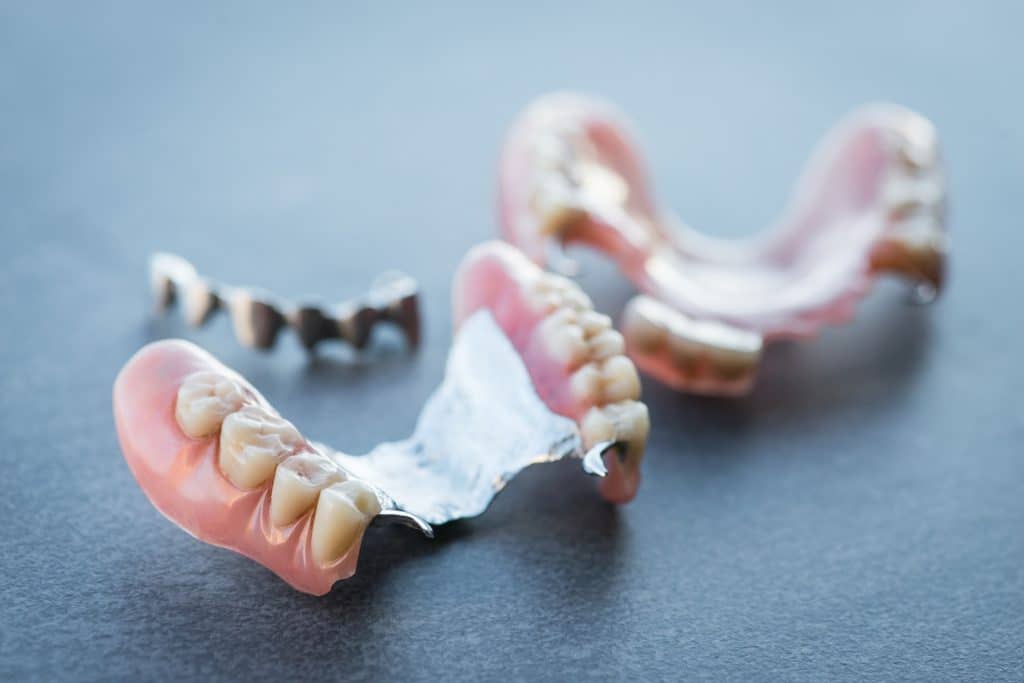
¿Sabías que en un estudio que se llevó a cabo en 19 países diferentes se encontró que 19% de la población usa algún tipo de dentadura postiza? Esto incluye prótesis parciales.
Si le faltan uno o más dientes, entonces puede estar considerando una dentadura postiza parcial. Las dentaduras parciales son aparatos dentales removibles que reemplazan los dientes perdidos.
Vienen en una variedad de estilos y materiales, por lo que es importante comprender los pros y los contras antes de tomar una decisión.
En esta guía rápida, veremos más de cerca los pros y los contras de las dentaduras postizas parciales. Al comprender ambos lados, puede tomar una decisión informada sobre si una dentadura postiza parcial es adecuada para usted o no. ¡Sigue desplazándote para obtener más información!
¿Qué son las prótesis dentales?
La palabra dentadura proviene de la palabra latina dens, que significa diente. Las dentaduras postizas son aparatos dentales que se pueden colocar en la boca para reemplazar los dientes perdidos. Vienen en dos tipos principales: prótesis completas y prótesis parciales.
dentaduras completas se utilizan para reemplazar todo el juego de dientes. Ya sea que reemplace los dientes superiores, los dientes inferiores o ambos, cuando se quita la dentadura postiza completa, solo tiene encías. Ahora bien, ¿qué son las prótesis parciales?
dentaduras parciales Por lo general, están hechos de plástico, metal o una combinación de ambos materiales. Consisten en una base del color de las encías que se coloca sobre las encías y se une a los dientes existentes con ganchos de metal.
Las prótesis parciales pueden ser removibles o pueden fijarse con cemento dental. Ya sean removibles o fijas, las dentaduras parciales están diseñadas para combinarse con los dientes naturales y mejorar la función y apariencia de la sonrisa.
Dentaduras postizas completas o parciales: ¿cuál es la mejor?
Las dentaduras postizas completas probablemente sean mejores para usted si ha perdido todos sus dientes. Sin embargo, si todavía tiene algunos de sus dientes naturales, entonces las dentaduras parciales tienen más sentido.
¿Preocupado por su presupuesto? Las dentaduras postizas completas tienden a ser más económicas porque las dentaduras completas están hechas para ajustarse sobre las encías y se mantienen en su lugar mediante succión o adhesivo.
Las dentaduras parciales están hechas para reemplazar uno o más dientes faltantes y se mantienen en su lugar mediante ganchos de metal que se adhieren a los dientes naturales. Esto los hace un poco más difíciles de limpiar y, en algunos casos, también un poco más caros.
Las dentaduras postizas completas pueden ser más cómodas que las dentaduras parciales porque no dependen de los dientes naturales como soporte. Sin embargo, dependiendo de su sonrisa, las dentaduras postizas parciales pueden ser más cómodas que las dentaduras postizas completas porque no cubren toda la línea de las encías.
Finalmente, cuando se trata de la limpieza, las dentaduras postizas completas pueden ser más fáciles de mantener limpias que las dentaduras postizas parciales porque no tienen ganchos de metal que puedan atrapar comida y placa.
Las dentaduras postizas parciales pueden ser más difíciles de mantener limpias que las dentaduras postizas completas porque tienen ganchos de metal que pueden atrapar comida y placa.
Tipos de prótesis parciales
Si ha leído el desglose anterior de dentaduras postizas completas y parciales y cree que las dentaduras postizas parciales son la mejor opción para usted, entonces es útil comprender los diferentes tipos disponibles para usted.
Dentadura parcial de metal fundido
Las prótesis dentales parciales de metal fundido son uno de los tipos más comunes de prótesis dentales parciales disponibles. Están hechas de una aleación de cromo cobalto ultrafina y ligera, que ofrece una mayor resistencia y estabilidad que otros tipos de prótesis parciales.
Algunos de los ventajas de las prótesis parciales de metal colado incluir el hecho de que sus dentaduras postizas no cubren tanto la boca como lo hacen las dentaduras postizas acrílicas. Esto aumenta la comodidad y le permite disfrutar de un mejor ajuste general.
Del mismo modo, debido a que estas dentaduras postizas parciales se basan en asientos de apoyo o ganchos para mantenerlas en su lugar, puede disfrutar de un ajuste con más apoyo. Esto ayuda a asegurar que su dentadura postiza se sostenga correctamente en su lugar.
Sin embargo, algunos de los desventajas de las prótesis parciales de metal fundido incluyen el hecho de que tienden a tener costos más altos que otros tipos de dentaduras postizas parciales. Esto se debe a la aleación necesaria para hacer estas prótesis.
Asimismo, las dentaduras postizas de metal fundido tardan más en fabricarse que otros tipos de dentaduras postizas parciales. Y, estéticamente, el marco de metal no es tan agradable. En algunos casos, es posible que pueda ver los ganchos de metal según la ubicación de la dentadura postiza parcial.
En general, sin embargo, las dentaduras parciales de metal fundido son una buena solución permanente para reemplazar los dientes perdidos y pueden durar muchos años con el cuidado adecuado.
Dentadura parcial acrílica
Las prótesis dentales parciales acrílicas, también conocidas como aletas dentales, son prótesis dentales hechas completamente de acrílico. Luego, este acrílico se sujeta con una base de metal y un broche.
Si bien puede usar estas dentaduras postizas parciales a largo plazo, generalmente se usan como dentaduras postizas parciales provisionales o temporales mientras encuentra una solución más permanente (como uno de los otros tipos de dentaduras postizas en esta lista, por ejemplo).
El ventajas de las prótesis parciales de acrílico son muchos, sin embargo. Por un lado, son económicos debido a la facilidad con la que las empresas pueden hacer dentaduras postizas acrílicas. El material utilizado también significa que son un poco más fáciles de reparar si los dañas.
sin embargo, el Desventajas de las prótesis parciales acrílicas. incluir el hecho de que la debilidad de la base acrílica tiende a romperse, independientemente del tipo de base metálica que tengas. Es por eso que a menudo son una solución temporal.
Si descubre que se rompen con frecuencia, debe mejorar el grosor del acrílico. Si bien esto ayuda a que sean más duraderos, significa que debe tomarse un tiempo para acostumbrarse a las dentaduras postizas en la boca.
Las dentaduras postizas parciales acrílicas pueden parecer voluminosas para algunas personas si las usan durante mucho tiempo debido al acrílico resistente a los impactos que se usa en el proceso de fabricación. Sin embargo, dependiendo de la forma de tu boca y tus preferencias, podrían ser la solución adecuada para ti.
Dentadura Parcial Flexible
Las dentaduras parciales flexibles son placas de plástico delgadas y sensibles al calor. Son fuertes y duraderos, pero flexibles y cómodos de llevar. Son una buena opción para personas alérgicas al metal fundido o al acrílico.
Al igual que los otros tipos de dentaduras postizas parciales enumeradas aquí, hay muchas ventajas de las prótesis parciales flexibles. Algunos de ellos incluyen el hecho de que las prótesis parciales flexibles:
- Se puede hacer más rápido que las dentaduras postizas de metal fundido.
- Son muy agradables estéticamente porque el material es de color goma (y ligeramente transparente)
- Ofrecen un mayor nivel de comodidad porque se adhieren fácilmente a las encías sin el uso de ningún adhesivo desagradable
- Son hipoalergénicos
- Ofrece flexibilidad sin tener que sacrificar la durabilidad.
Como ventaja adicional, estas dentaduras postizas flexibles son resistentes a los olores y las manchas. Sin embargo, eso no significa que no tengan sus desventajas.
El desventajas de las dentaduras parciales flexibles incluyen el hecho de que la base es más propensa a la acumulación de bacterias. Si bien esto es algo cierto para todas las dentaduras postizas, aprender a colocarlas correctamente limpia tus dentaduras postizas puede ayudar a prevenir problemas con la acumulación.
Debido a la popularidad y durabilidad de estas dentaduras postizas parciales, también tienden a ser más costosas que otros tipos de dentaduras postizas. Sin embargo, debido a que son tan resistentes y duraderos, se les da mucho uso. Eso ayuda a compensar el costo.
En general, las dentaduras parciales flexibles pueden ser una opción cómoda y estéticamente agradable para las personas que las usan.
Ventajas de las prótesis parciales
¿No está convencido de los beneficios de las dentaduras postizas parciales? Además de algunos de los beneficios enumerados anteriormente con respecto al tipo específico de dentaduras postizas parciales disponibles, aquí hay algunos beneficios más.
Las dentaduras parciales son mínimamente invasivas
Las prótesis dentales parciales tienen varias ventajas sobre otros tipos de prótesis dentales. Una de las mayores ventajas es que son mínimamente invasivos.
Asimismo, la proceso obtener prótesis parciales es mínimamente invasivo. No requieren cirugía ni extracción dental, y se pueden colocar en una sola visita al consultorio (o incluso en línea!).
Esto significa que puede evitar el dolor y el tiempo de recuperación asociados con los procedimientos más invasivos mientras disfruta de los beneficios de reemplazar los dientes perdidos.
Las dentaduras parciales se pueden ajustar más tarde
Una de las principales ventajas es que puede ajustar las prótesis parciales más tarde si es necesario. Esto significa que si su boca cambia de forma con el tiempo, la dentadura se puede ajustar para adaptarse a su nueva boca.
Con pedidos en línea y procesos simples en el hogar, puede pedir fácilmente otro juego de dentaduras postizas parciales, tomar una nueva impresión y recibir sus dentaduras postizas parciales en la puerta de su casa en cuestión de días.
Este proceso se llama rebase de dentadura postiza y ofrecemos un servicio rápido y sencillo para garantizar que su dentadura postiza quede como nueva.
Las dentaduras parciales son más fáciles de adaptar
¿Se pregunta si debe o no obtener dentaduras postizas completas o parciales? Si todavía tiene algunos dientes grandes, entonces las dentaduras parciales pueden tener sentido.
Debido a que se ajustan alrededor de sus dientes naturales y solo reemplazan algunos de sus dientes, puede beneficiarse de una mayor comodidad en comparación con las dentaduras postizas completas. En general, esto hace que sea mucho más fácil acostumbrarse a comer y hablando con dentaduras parciales.
Desventajas de las prótesis parciales
Entendemos que las dentaduras parciales no son para todos. Queremos ser honestos acerca de las desventajas de obtener dentaduras postizas parciales, que incluyen lo siguiente.
Las dentaduras parciales podrían no funcionar como los implantes dentales
Una de las mayores desventajas es que las dentaduras parciales pueden no funcionar como los implantes dentales. Las dentaduras parciales dependen de los dientes restantes como soporte, lo que puede hacer que se deslicen o se muevan al comer o hablar.
Según la estructura de su boca y la posición de los dientes restantes, es posible que las dentaduras postizas completas sean mejores para usted. La mejor manera de resolver esto es Ponerse en contacto con un especialista que pueda valorar tu caso concreto.
Las dentaduras parciales requieren una limpieza adecuada
Las dentaduras parciales requieren una limpieza adecuada al igual que los dientes naturales. Después de todo, las bacterias y la placa pueden formarse en las dentaduras postizas al igual que en los dientes naturales, lo que puede provocar enfermedades de las encías.
Las dentaduras parciales también deben cepillarse con un cepillo de dientes suave y una pasta de dientes no abrasiva todos los días, tal como lo haría con sus dientes naturales. Sin embargo, además de eso, querrá aprender a remojarlas en un limpiador suave para dentaduras postizas todos los días para asegurarse de tener una boca sana.
Lo que debe saber sobre el pedido de dentaduras postizas parciales en línea
Si bien muchos laboratorios dentales ofrecen dentaduras postizas parciales, también puede considerar ordenarlas en línea. Esto es lo que necesita saber sobre pedir dentaduras postizas parciales en línea a través de Denture Rescue.
Paso 1: hará un pago inicial
Primero, realizará un pago inicial. Esto garantiza que podamos cubrir los costos de comenzar a personalizar su dentadura postiza parcial. También cubre el costo de nuestras tarifas administrativas y el envío de su kit de impresión personalizado.
Paso 2: harás tus impresiones
Deberá realizar sus impresiones dentales. Puede hacerlo en casa utilizando un kit que se le enviará. Si bien esto puede parecer una tarea abrumadora, en realidad es bastante fácil con las instrucciones incluidas.
Una vez que haya hecho sus impresiones, deberá enviárnoslas por correo para que podamos usarlas para hacer sus dentaduras postizas.
Paso 3: Un especialista hará sus dentaduras parciales
Es importante recordar que las dentaduras postizas parciales no son como los aparatos de venta libre. Están hechos específicamente para cada persona y requieren medidas precisas. Por lo tanto, lo mejor es que los haga un profesional.
Cuando devuelva sus impresiones a Dental Rescue, puede estar seguro de que nuestros especialistas están trabajando arduamente para asegurarse de que hagamos sus dentaduras postizas parciales. Nos aseguraremos de que se ajusten bien a tu impresión y que se vean naturales.
Luego, se los devolveremos en un plazo de 7 a 10 días hábiles.
Ordene sus dentaduras parciales ahora
En general, las dentaduras postizas parciales son una excelente manera de reemplazar los dientes perdidos y restaurar su sonrisa. Si está considerando dentaduras postizas parciales, le recomendamos que las ordene ahora.
Hemos hecho que sea lo más fácil posible obtener dentaduras postizas parciales en línea sin tener que poner un pie fuera de su casa. no esperes - pide tus dentaduras parciales ¡hoy!
Compre dentaduras postizas completas en línea.

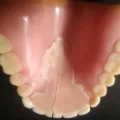
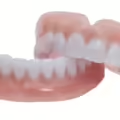
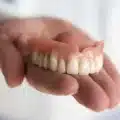
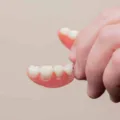

4 Comments